What Was The Windmill Used For In Animal Farm
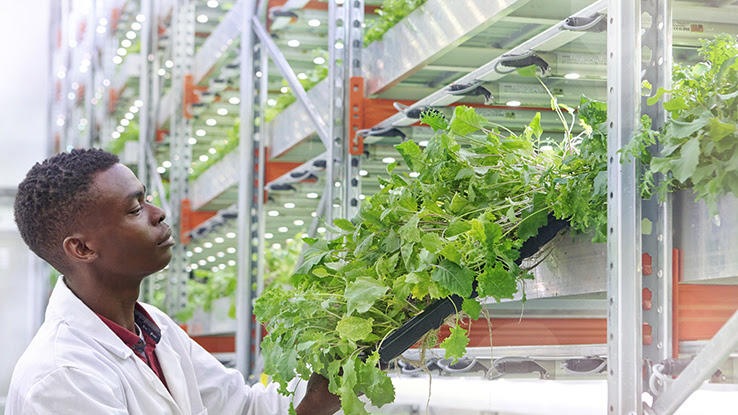
As the global population inches closer and closer to the 8-billion-people mark, the amount of sustenance needed to keep anybody fed continues increasing — placing stress on every aspect of our food organization in the procedure. Farming of fresh produce in particular faces difficulties in scaling up production to see our growing demand, largely due to the need for more space in which to grow crops. The primary style farmers accept responded has been to gradually adopt more efficient equipment for planting and harvesting crops, but the mode we farm the land itself has largely remained unchanged. However, a new blazon of farming is currently knocking on the befouled door: Vertical farming is catching the eyes of farmers and investors akin.
With its less expensive and more sustainable methods, vertical farming may presently see more widespread utilization thanks to some of its key benefits. Not simply can vertical farming reduce costs associated with production (and pass those savings along to consumers), just drought-affected regions across the globe may also exist better able to grow only every bit much produce with a fraction of the water traditional crops require.
Curious to find out how this concept could change commerce, our climate — and the investing earth? Join us for a expect into vertical farming and the ways it may be an investment worth seeding.
What Is Vertical Farming?
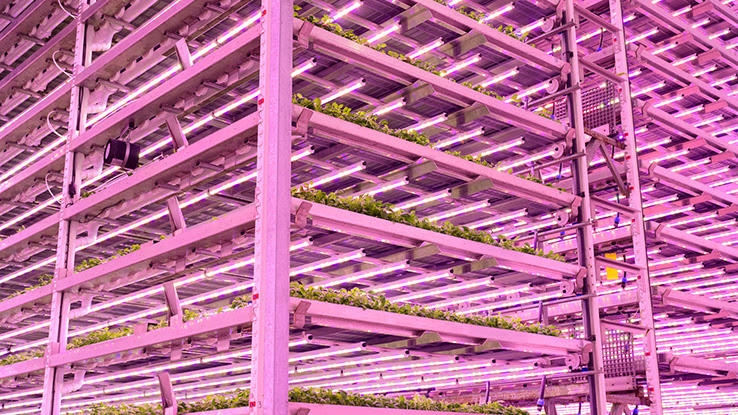
Vertical farming is exactly what it sounds like — plus a whole lot more. Farmers establish crops on surfaces that are stacked vertically, rather than spreading farther and further out via the horizontal horticulture we've been used to for centuries. Because farmers tin extend vertical layers up into the air, they can utilise more of their farmland for more vertical layers — and abound more on a much smaller footprint of basis. Vertical farming allows growers to institute far more crops on the acreage they already ain because they can expand upward and no longer need to expand outward.
It's a similar principle to apartment complexes. By building up, a much larger population can live on the same plot of country that might otherwise fit just a few families in sprawling houses. And, buildings and flat complexes in metropolitan areas can fifty-fifty use vertical farming to grow produce, allowing people to shop locally and decrease their carbon footprint.
Some vertical farms are built outdoors where crops are traditionally grown. Other farmers construct buildings, like warehouses and greenhouses, or apply shipping containers to house the crops. Using these structures and appropriate lighting equipment, farmers have the ability to grow crops twelvemonth-circular while limiting pest intrusion and impairment from poor environmental conditions or natural disasters. Vertical farming can also allow growers to operate in areas that traditionally don't make platonic farmland.
Vertical Farming and the Climate
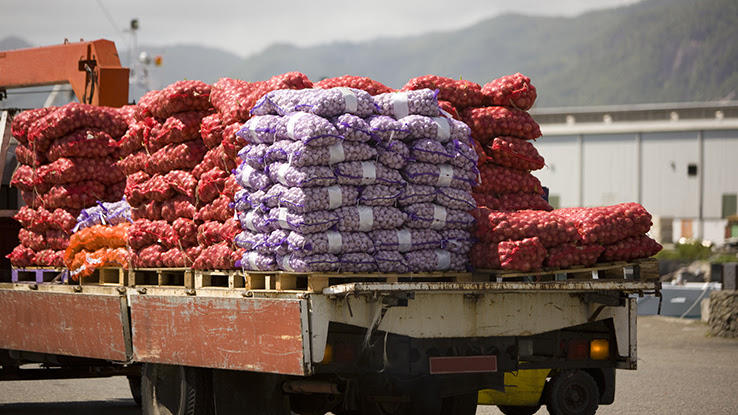
Every bit mentioned, vertical farming holds the potential to combat climate change. When formerly farmed country is allowed to render to its natural state — a process called rewilding — that land's typical ecosystems, including native plantlife, can regrow and amend regulate the surround.
Additionally, traditional farming strains water resources and is responsible for emitting nearly a quarter of the world's greenhouse gases. But vertical farming uses between seventy% and 95% less h2o than traditional agriculture uses for tillage. Vertical farmers apply hydroponic systems to water their crops, and these designs use much less water considering they recirculate information technology. The hydroponic systems create their own unique ecosystem that recycles the water supply and opens farmers' options to growing practically whatever ingather any time of the twelvemonth thanks to the abiding h2o supply. According to Harvard Business Schoolhouse, vertical farming's "engineering science tin can yield as much as 350 times more produce in a given area as conventional farms, with 1% of the h2o."
Vertical farming can limit agricultural contributions to climate change in other ways, also. According to the Heart for Biological Diversity, "The U.Due south. transportation sector is responsible for about a tertiary of our state'south climate-dissentious emissions." Part of that transportation involves shipping fresh produce from farms to cities, often from one side of the state to the other. Additionally, the United nations reports that, by 2050, 68% of the world'due south population is expected to live in urban areas, meaning more people living farther abroad from traditional farms — and more greenhouse gas-emitting freight trucks on the road to go fresh produce to grocery stores.
Vertical farms could nowadays nonetheless another solution by limiting the need for cross-country transportation in the food supply chain. Growers can construct these farms in urban areas or catechumen existing buildings into farming facilities, which provides residents like shooting fish in a barrel access to food and helps them limit their own carbon footprints.
Should Y'all Invest in Vertical Farming?
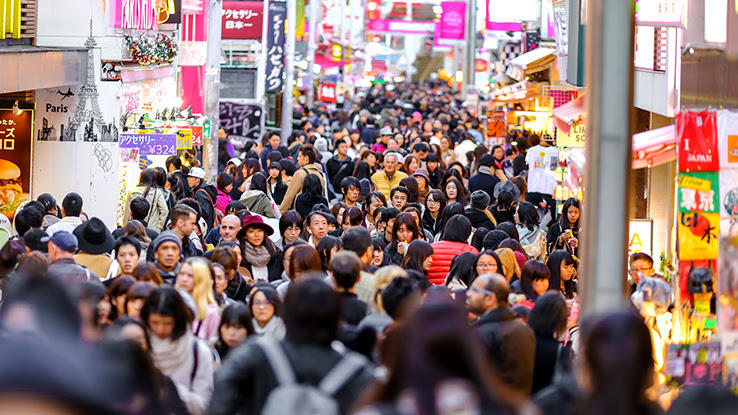
All investments come up with varying levels of risk, and emerging technologies like vertical farming tend to be riskier because their impacts and longevity aren't yet clear. However, vertical farming applied science has already garnered the attention of private upper-case letter investors like Google Ventures, which invested $xc million in the vertical farm-tech company Bowery Farming; IKEA, which has committed to investing $115 million in the indoor agriculture startup AeroFarms; and Softbank, which invested $200 million in Plenty, a vertical farming visitor that also utilizes artificial intelligence to manage ingather growth.
This confidence is reassuring — and the potential for vertical farming indeed seems bright thank you to the positive way it stands to boost our access to food while combating climate change at the same fourth dimension. According to Forbes, "The indoor farming technology market was valued at $23.75 billion in 2016, and is projected to reach $xl.25 billion by 2022," meaning information technology could nearly double, and soon.
Withal, while venture capitalists' decisions can serve every bit good endorsements, the boilerplate investor should accept them with a grain of salt. This manufacture hasn't had much time to stabilize nevertheless, and it's vital to consider your level of financial chance tolerance before making the leap into investing. Additionally, many vertical farming companies haven't gone public all the same, meaning you tin't invest in them for now — but you can start researching to make a well-informed decision when the time comes.
Vertical Farming Stocks to Opt For
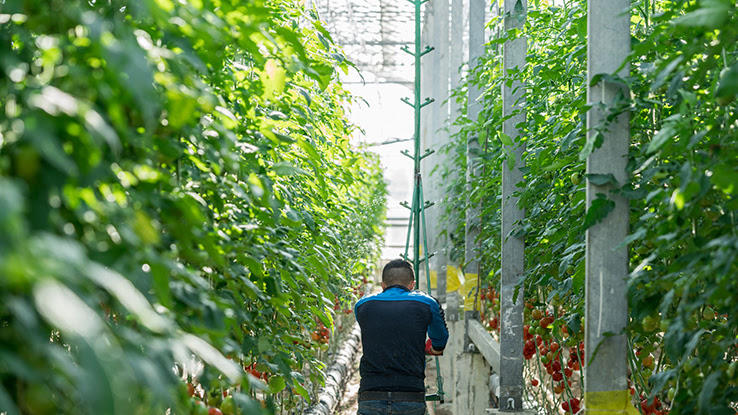
If y'all've decided to make the investing jump and make vertical farming companies a part of your portfolio, you might be thinking of opting for substitution-traded funds (ETFs) instead of individual stocks for the time being. Because ETFs can contain multiple types of assets and more than evenly distribute risk among the assets they contain, they tin can be ideal for newer investors who want to get a slice of this emerging industry. Instead of betting on a single company'due south stock to perform well, an ETF allows you to hold multiple stocks from the same manufacture — and if one performs poorly, you won't take as much of a hit thanks to the built-in diversification.
Unfortunately, the vertical farming industry isn't quite there yet — there aren't any dedicated ETFs to provide you an like shooting fish in a barrel and diversified manner in. Investing in vertical farming currently means investing in individual companies or in other agribusiness sectors that stand to benefit if vertical farming really takes off. That said, there are a few individual stocks you might consider adding to your portfolio. These include:
- AppHarvest (APPH), an indoor farming tech company that owns several of the largest indoor farms in the Usa
- Jump Valley Acquisition (SV), a house that's undergoing a merger with AeroFarms (one of the first vertical farming companies) and will presently be available for public trading under the ticker ARFM
- Hydrofarm Holdings Grouping (HYFM), which manufactures the controlled indoor agronomics equipment used in vertical farming
- Village Farms International (VFF), a company that creates and operates "mega-scale greenhouses" and as well owns a cannabis-growing company, Pure Sunfarms
Vertical farming may indeed be the investment of the future — and you lot might also want to wait for the time to come before buying in. This emerging industry holds aplenty potential for growth, simply it's understandable if you decide to look for ETFs to sprout up to mitigate your personal financial risk.
Source: https://www.askmoney.com/investing/is-vertical-farming-the-investment-of-the-future?utm_content=params%3Ao%3D1465803%26ad%3DdirN%26qo%3DserpIndex
Posted by: gaultgrabusereave1955.blogspot.com


0 Response to "What Was The Windmill Used For In Animal Farm"
Post a Comment